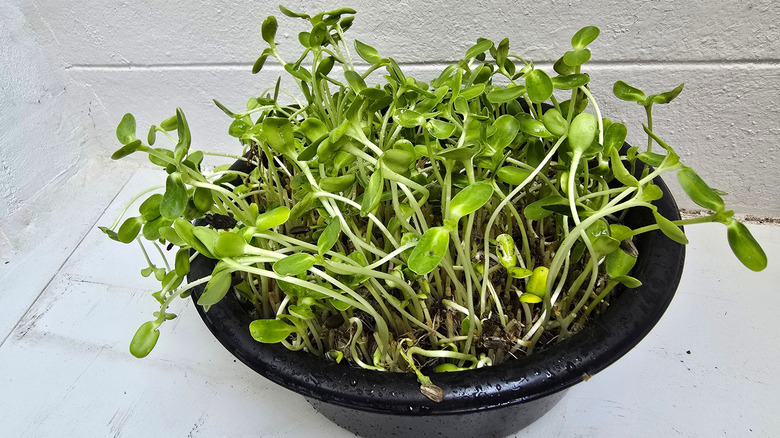Should You Grow Sprouts In Your Garden? What You Should Know Before You Try
Sprouts might look tiny and fragile, but don't let their size fool you. They pack a big punch when it comes to freshness and satisfaction. One of the biggest pros of growing sprouts at home is how quickly they reward your effort. You don't need to wait weeks or months like with traditional vegetables. Most sprouts are ready to harvest in just 3 to 8 days, and they can thrive right on your kitchen counter, no matter the season.
Sprouts offer a concentrated source of vitamins, minerals, and antioxidants, making them an excellent addition to salads, sandwiches, and wraps. Plus, their crisp texture and mild flavors can elevate everyday dishes with minimal effort. They are easy to grow, but there are some safety measures that need to be followed. Because they thrive in moist, warm environments, they can be vulnerable to pathogenic bacterial contamination if not handled carefully. It is important to rinse them properly before eating. They also have a short shelf life and must be consumed within a few days of harvest (and pregnant women should not eat them raw).
Despite these precautions, sprouts remain a convenient and rewarding way to bring a touch of green into your kitchen all year long. Using a seed sprouter has the benefit of further simplifying the process by providing ideal conditions for healthy, consistent growth. Overall, sprouts can be a great introduction to indoor gardening and a practical way to add nutrition to your meals.
How to grow sprouts at home safely
If you're convinced to give sprouts a try, knowing exactly how to handle them makes all the difference. Start with high-quality sprouting seeds that have been grown following good agricultural practices or reputable international standards, as recommended by the Food and Drug Administration. From radish to alfalfa, there's a sprout to match nearly every taste preference. Alfalfa, in particular, stands out as an excellent choice for beginners, as it grows easily in a jar with just a few simple steps (rinse, drain, and repeat) using everyday kitchen tools.
Another safety tip: treat your seeds with either vinegar or hydrogen peroxide first. Soak them for 15 minutes in a solution of 3% hydrogen peroxide (preheated to 140 degrees Fahrenheit for five minutes) or a diluted vinegar solution (3 parts vinegar to 2 parts water), and rinse thoroughly. Then you can start the usual process, soaking the seeds overnight and rinsing and draining them each day. When the sprouts are ready, give them a thorough final rinse. Dry them as much as possible before refrigeration. Store them in an airtight jar so they do not lose all their moisture. Remember, sprouts should be consumed within three to five days to ensure freshness and safety.
With a little care and the right tools, sprouts can become a nutritious and satisfying addition to your home gardening journey. Incorporating sprouts into your diet may play a role in better digestion, blood sugar levels, and even heart health, along with providing a flavorful gateway to homegrown food.

